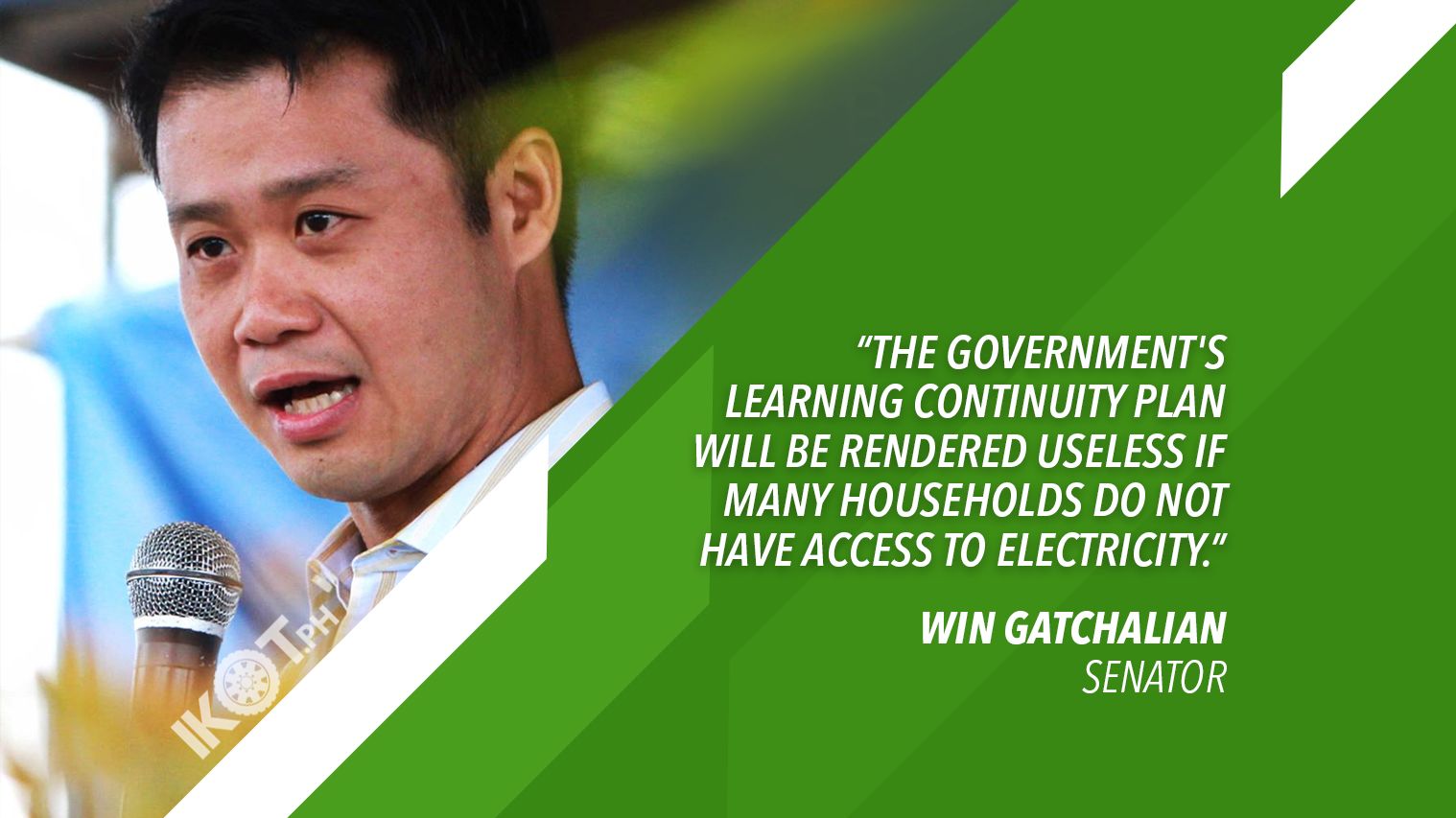Senator Win Gatchalian has pressed the Department of Energy (DOE) into ensuring the continuous delivery of electricity service to every household for the use of students in alternative learning modalities as schools prepare for the “new normal” in the education system.
Gatchalian said that aside from online learning, the shift to blended learning does not necessarily require students to have internet connectivity or own gadgets to access educational content. This is why the lawmaker has been advocating to tap television and radio-based instructions due to their wider reach. He, however, expressed concern that the government’s learning continuity plan will be rendered useless if many households do not have access to electricity.
Data from the DOE in 2019 show that there were 1,885,507 unserved households that have yet to be connected to the power grid or 7.71% of total households in the country. The majority of the number is found in Mindanao (1,187,769), while Luzon and the Visayas share the remaining half (364,409 and 333,329, respectively).
The DOE, in its pronouncements in the past, vowed 100% electrification in the country by 2020. It allocated P500 million of its 2020 budget of P2.3 billion to its Total Electrification Program (TEP).
“The DOE should make true on its commitment of 100% electrification within the year.”
“Many underprivileged students living in remote areas have no electricity and they will be left behind in their studies by more socially advantaged students as well as those from private schools. The DOE should make true on its commitment of 100% electrification within the year,” the veteran legislator said.
The Chairman of the Senate Committee on Energy has prodded the DOE to come up with strategies and roll out plan on how the agency intends to provide reliable electricity service in unserved and underserved areas.
“Use new technology, such as the microgrid systems, to provide reliable electric services to every household.”
The seasoned lawmaker suggests the use of new technology, such as the microgrid systems, to provide reliable electric services to every household in the country and accelerate total electrification in areas with no electricity access, no distribution system lines, no home power systems, or no connection to any microgrid.
“Pagkatapos ng aming hearing ukol sa total electrification, ang DOE ay nag-isyu ng isang circular para sa paggamit ng microgrids upang tugunan ang kawalan ng kuryente sa remote areas. Kailangan talaga nating gumamit ng makabagong teknolohiya upang maabot natin ang lahat ng estudyante at households na nasa bundok at mga isla,” the senator said.
“Admittedly, it is challenging to reach the households and students in the last mile. We will now use new technology to reach them. The technology is there but we don’t have sufficient funds. We are now looking for ways to fund this new technology so that we can provide electricity to every student and household,” he ended.

